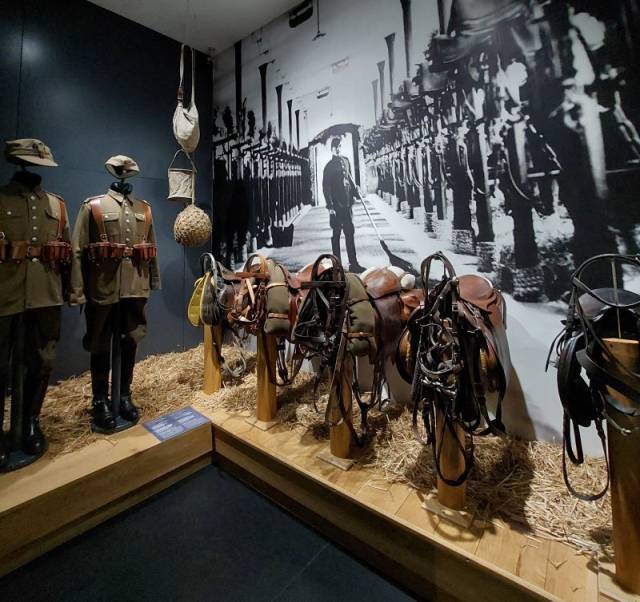In the third case – there are six hand weapons, which represent a variety of designs used by Polish military formations fighting for independence during World War I. The review begins with the most popular French cavalry sabre 1822. This pattern – after cutting the rounds – was commonly used by Polish uhlans. At the same time when the 1917 pattern began to be produced, a saber appeared with a characteristic lattice on the hood, which was to prevent the hand from slipping. These sabers were made by many officers of the 1st Krechowiecki Uhlan Regiment, hence the name "Krechowiecka".
In the regiments of the eastern corps, dragoon shashkas were popular – here we present the shashka of privates from 1881.
Shashkas had a head with an open handle with a split head, which in profile gave them the appearance of a bird's head. It was worn in a scabbard on the edges in such a way that the blade was directed upwards. The name of the shashka – in the Kabardian language is "shashchla", which means – a large knife. The cavalry of the Polish Legions was armed with heavy Austrian combat sabers – at the exhibition model 1904 and 1869 with characteristic basket guards. In 1918 – in connection with the outbreak of the Greater Poland Uprising, German sabers were included in Polish units; At the exhibition, they are represented by the Prussian sabre of field artillery. To complete the review of hand weapons, head towards the exit, where there are more showcases.



 Places
Places Guides
Guides Map
Map Outdoor games
Outdoor games Trails
Trails Events
Events Mobile app
Mobile app Contact
Contact














